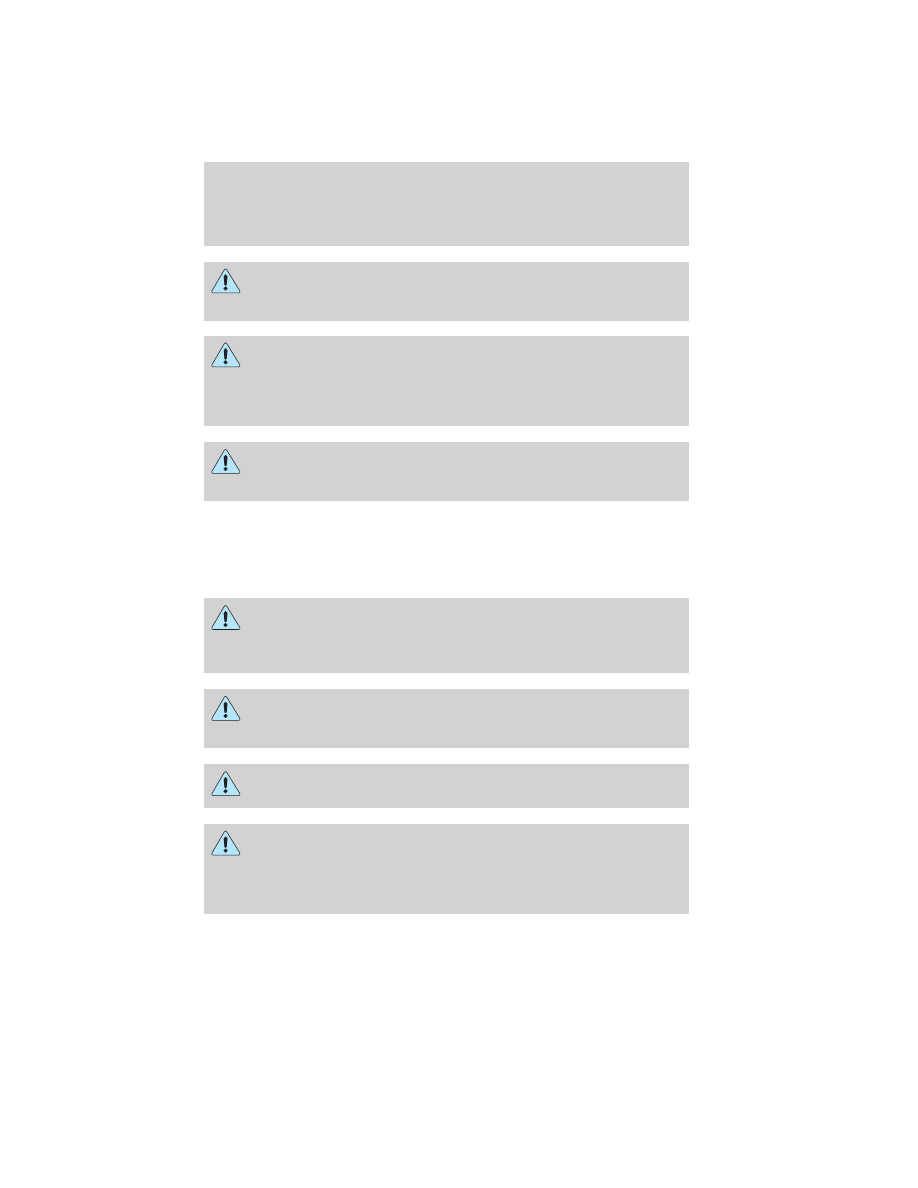Mercury Grand Marquis (2011 year). Manual - part 8

WARNING: Never place your arm over the air bag module as a
deploying air bag can result in serious arm fractures or other
injuries.
WARNING: Ford Motor Company recommends that an
authorized dealer inspect all steering column assemblies in use
in vehicles involved in a collision. Failure to inspect and if necessary
replace the steering column assembly could result in severe injury or
death in the event of a collision.
WARNING: Do not attempt to service, repair, or modify the
steering column, its adaptive module, or its fuses. See your
authorized dealer.
To properly position yourself away from the airbag:
• Move your seat to the rear as far as you can while still reaching the
pedals comfortably.
• Recline the seat slightly one or two degrees from the upright position.
WARNING: Do not put anything on or over the air bag module.
Placing objects on or over the air bag inflation area may cause
those objects to be propelled by the air bag into your face and torso
causing serious injury.
WARNING: Do not attempt to service, repair, or modify the
airbag supplemental restraint systems or its fuses. See your
authorized dealer.
WARNING: The front passenger airbag is not designed to offer
protection to an occupant in the center front seating position.
WARNING: Modifying or adding equipment to the front end of
the vehicle (including frame, bumper, front end body structure
and tow hooks) may affect the performance of the airbag system,
increasing the risk of injury. Do not modify the front end of the
vehicle.
Seating and Safety Restraints
113
2011 Crown Victoria (cro)
Owners Guide, 3rd Printing
USA (fus)